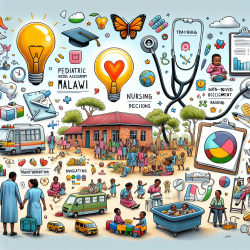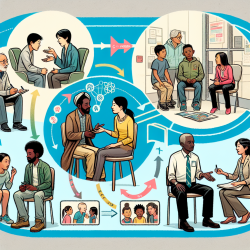In the evolving landscape of climate research, the ability to accurately measure and analyze soil respiration and greenhouse gas fluxes has become paramount. The groundbreaking research titled COSORE: A community database for continuous soil respiration and other soil-atmosphere greenhouse gas flux data provides a robust framework for practitioners to elevate their understanding and application of soil respiration data. This blog aims to inspire and guide practitioners in integrating these insights into their practice, fostering a deeper connection between educational efforts and climate science.
The COSORE database is an open-source, community-driven resource designed to facilitate continuous, high-frequency measurements of soil respiration and other soil-atmosphere greenhouse gas fluxes. This resource is pivotal for climate change syntheses and model evaluation, offering a wealth of data that can be harnessed to improve our understanding of soil carbon dynamics and greenhouse gas emissions.
Key Takeaways for Practitioners
Practitioners can leverage the COSORE database in several impactful ways:
- Enhanced Data Accuracy: COSORE’s high-frequency, automated data collection reduces the uncertainties associated with traditional soil respiration measurements. This accuracy is crucial for developing more reliable climate models and educational tools.
- Open Access and Reproducibility: The open-source nature of COSORE promotes scientific transparency and reproducibility, allowing practitioners to access and utilize the data freely. This openness fosters collaboration and continuous improvement in research methodologies.
- Diverse Applications: COSORE’s design accommodates various soil-atmosphere measurements, including ecosystem respiration and methane fluxes. This versatility enables practitioners to explore a wide range of environmental conditions and experimental treatments.
Implementing COSORE in Educational Settings
For educators and practitioners working in schools, integrating COSORE’s data and methodologies into the curriculum can significantly enhance students' learning experiences. Here are some practical steps to get started:
- Introduce the Concept of Soil Respiration: Begin by explaining the importance of soil respiration and its role in the global carbon cycle. Use visual aids and real-world examples to make the concept relatable and engaging.
- Utilize COSORE Data in Lessons: Incorporate COSORE’s datasets into classroom activities. Encourage students to analyze the data, identify patterns, and draw conclusions about soil carbon dynamics and greenhouse gas emissions.
- Promote Hands-On Learning: Organize field trips or lab sessions where students can collect their own soil respiration data using portable sensors. Compare their findings with COSORE’s data to highlight the importance of continuous, high-frequency measurements.
- Encourage Critical Thinking: Challenge students to think critically about the data and its implications for climate change. Facilitate discussions on how accurate soil respiration measurements can inform climate policies and mitigation strategies.
Encouraging Further Research
While COSORE provides a robust foundation, there is always room for further research and innovation. Practitioners are encouraged to explore the following areas:
- Data Integration: Combine COSORE’s data with other environmental datasets to gain a more comprehensive understanding of ecosystem processes. This integration can reveal new insights into the interactions between soil respiration and other biogeochemical cycles.
- Methodological Improvements: Experiment with new measurement techniques and data analysis methods to enhance the accuracy and reliability of soil respiration data. Share your findings with the community to contribute to the collective knowledge base.
- Long-Term Monitoring: Establish long-term monitoring sites to track changes in soil respiration and greenhouse gas fluxes over time. These longitudinal studies are critical for understanding the impacts of climate change on soil carbon dynamics.
By embracing the COSORE database and its methodologies, practitioners can significantly enhance their research capabilities and contribute to the global effort to understand and mitigate climate change. The continuous, high-frequency data provided by COSORE is a powerful tool that can transform educational practices and inspire the next generation of climate scientists.
To read the original research paper, please follow this link: COSORE: A community database for continuous soil respiration and other soil-atmosphere greenhouse gas flux data.










